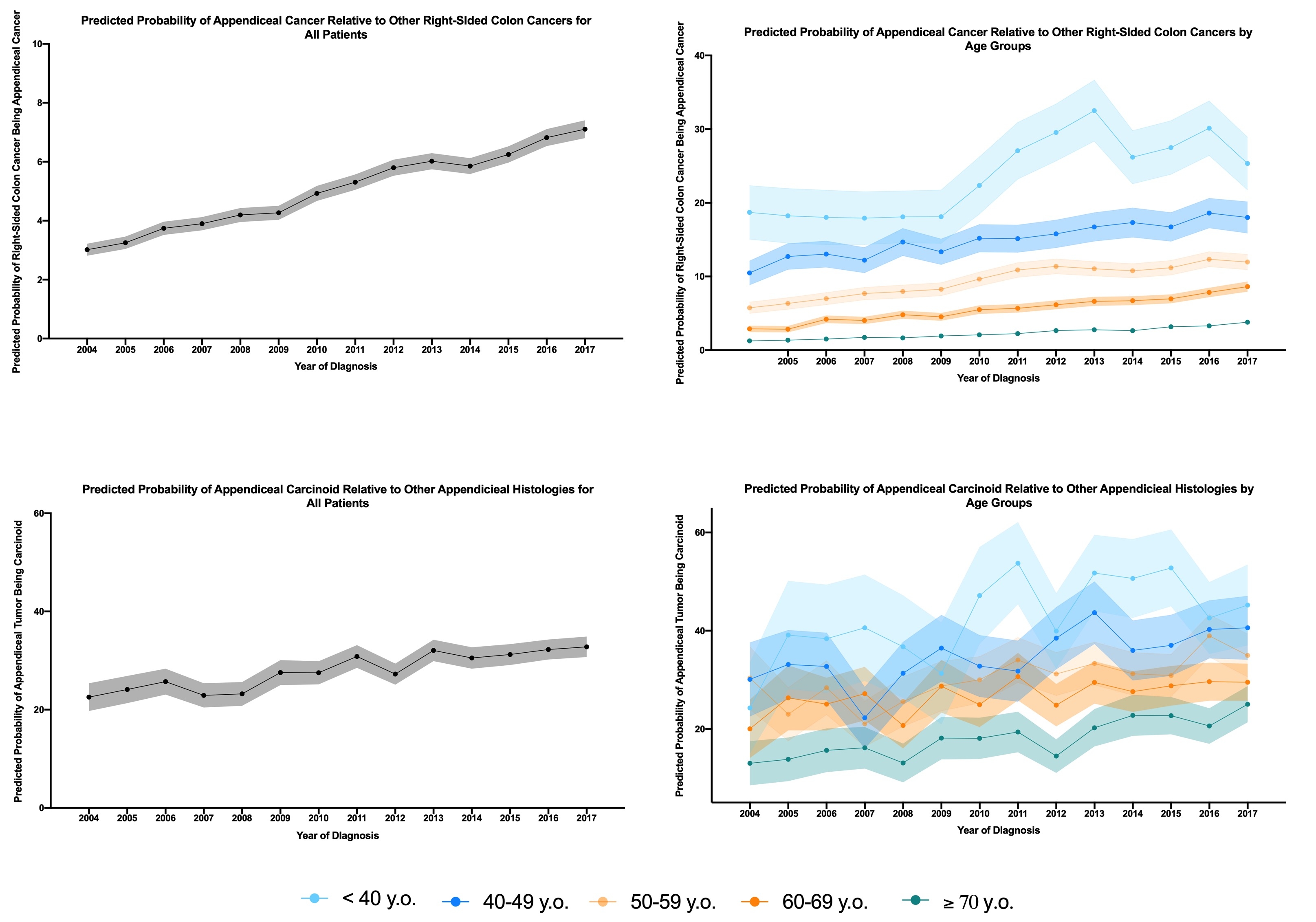The Relative Increase in Appendiceal Tumors in the National Cancer Database
Michelle C. Salazar1, Maureen E. Canavan1, Sitaram Chilakamarry2, Daniel J. Boffa1, Kevin Schuster1
1Surgery, Yale School of Medicine, New Haven, Connecticut, United States, 2Surgery, UT Southwestern Medical Center, Dallas, Texas, United States
Objective: Non-operative management of acute appendicitis is increasingly common. However, small studies have demonstrated high rates of appendiceal cancer in interval appendectomy specimens. Therefore, we sought to identify national trends in appendiceal cancer for all patients and by age group. Design: Retrospective cohort. Setting: National Cancer Database. Patients: Eighteen years or older, diagnosed with a right-sided colon cancer (including appendiceal) from 2004 to 2017, and underwent surgery. Intervention: None. Main Outcome: Outcomes included trends in appendiceal cancer compared to right-sided colon cancers and trends in appendiceal cancer histology. Logistic regression, adjusting for year of diagnosis, patient age, insurance, income, area of residence and comorbidity assessed trends over time. Predicted probabilities of the outcomes were derived from logistic regression models. Results: Of 387,867 patients with right-sided colon cancer, 19,570 had appendiceal cancer and of those 5,628 had a carcinoid tumor. Odds of appendiceal cancer, relative to other right-sided colon cancers, increased from 2004 to 2017 (OR: 2.56, 95%CI: 2.47-2.79). Although the odds increased in all age groups, the predicted probability of having an appendiceal cancer was more markedly increased in patients 40-49 y.o. (2004: 10%, 95%CI: 9-12 to 2017:18%, 95%CI: 16-20). Odds of appendiceal carcinoid, relative to other appendiceal histologies, increased from 2004 to 2017 (OR: 1.70, 95%CI: 1.40-2.07) with the greatest increase in predicted probability of a carcinoid in patients <40 y.o. (2004:24%, 95%CI: 15-36 to 2017: 45%, 95%CI: 37-53). Conclusions: Appendiceal tumors have increased overtime and the increase appears to be driven by a rise in carcinoids. This increase is most prevalent in patients 49 years or younger. When non-operative management of acute appendicitis is undertaken, close follow-up may be appropriate given these findings. Figure 1. Predicted Probabilities of Appendiceal Cancer Relative to Right-Sided Colon Cancers and Appendiceal Carcinoid Relative to Other Appendiceal Histologies.
Figure 1. Predicted Probabilities of Appendiceal Cancer Relative to Right-Sided Colon Cancers and Appendiceal Carcinoid Relative to Other Appendiceal Histologies.
Back to 2021 Abstracts
